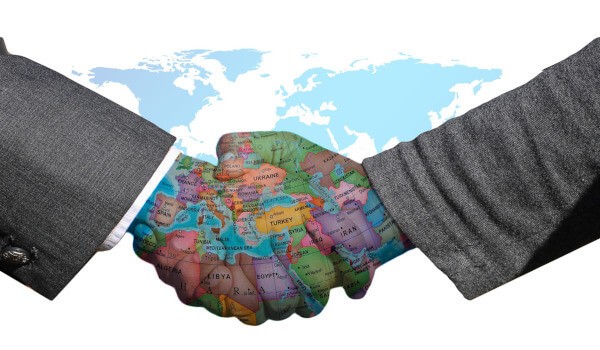The Challenges in International Efforts to Combat Global Warming

International efforts to combat global warming face numerous challenges, stemming from political, economic, technological, and social factors. These challenges complicate the coordination and implementation of effective global strategies to mitigate climate change and adapt to its impacts. Here’s an in-depth look at these challenges:
Political Challenges
-
Divergent National Interests:
- Economic Priorities: Countries prioritize their economic growth and development, which can conflict with global climate goals. For instance, developing countries may focus on industrialization and poverty reduction, while developed countries might emphasize emission reductions.
- Sovereignty Issues: Nations are often reluctant to cede control over their policies and actions to international agreements, viewing them as infringements on their sovereignty.
-
Policy Inconsistencies:
- Changing Governments: Shifts in national governments and their policies can lead to inconsistent commitments and actions on climate change. New administrations may roll back previous climate initiatives.
- Fragmented Policies: Lack of cohesive policies within and between countries can undermine global efforts. Different regulations, standards, and enforcement mechanisms create complexities.
-
International Relations and Geopolitics:
- Conflicts and Tensions: Geopolitical tensions and conflicts can divert attention and resources away from climate initiatives. Countries in conflict may struggle to prioritize climate action.
- Diplomatic Negotiations: Reaching consensus on global agreements requires extensive negotiations, often leading to compromises that dilute the effectiveness of climate measures.
Economic Challenges
-
Funding and Investment:
- Climate Finance: There is a significant gap in funding for climate mitigation and adaptation, especially in developing countries. Pledges made by wealthy nations often fall short of the actual needs.
- Cost of Transition: Shifting from fossil fuels to renewable energy sources involves substantial economic costs. Countries reliant on fossil fuel industries face economic disruptions and job losses.
-
Economic Inequality:
- Developed vs. Developing Countries: Developed countries have historically contributed more to global emissions and have more resources to address climate change. Developing countries, with fewer resources and higher vulnerability, demand greater financial and technological support.
- Resource Allocation: Ensuring equitable distribution of resources and support for climate action remains a significant challenge. Wealthier nations are often perceived as not doing enough to support poorer nations.
Technological Challenges
-
Technology Transfer:
- Intellectual Property Rights: The transfer of clean technologies from developed to developing countries is hindered by intellectual property rights and high costs.
- Capacity Building: Developing countries often lack the technical expertise and infrastructure to implement and maintain advanced clean technologies.
-
Research and Development:
- Innovation Needs: Continuous innovation is required to develop new and more efficient technologies for reducing emissions and adapting to climate impacts.
- Investment in R&D: Sustained investment in research and development is necessary but often lacking, especially in economically constrained nations.
Social and Cultural Challenges
-
Public Awareness and Engagement:
- Climate Literacy: Levels of understanding and awareness about climate change vary widely across the world. Increasing climate literacy is crucial for public support and behavioral change.
- Resistance to Change: Cultural attitudes and resistance to changing established lifestyles and consumption patterns can hinder efforts to reduce emissions.
-
Equity and Justice:
- Climate Justice: Ensuring that climate actions are fair and just, particularly for marginalized and vulnerable communities, is a complex challenge. Climate policies must address social equity to be effective and widely supported.
Institutional Challenges
-
Coordination and Implementation:
- International Cooperation: Effective global climate action requires unprecedented levels of cooperation among countries, international organizations, and non-state actors. Coordinating these efforts is logistically and politically challenging.
- Monitoring and Enforcement: Ensuring compliance with international agreements and monitoring progress are critical but difficult tasks. There is often a lack of robust mechanisms to enforce commitments.
-
Institutional Capacity:
- Governance Structures: Weak governance structures in some countries impede the development and implementation of effective climate policies.
- Institutional Inertia: Existing institutions and policies may be resistant to change, slowing down the adoption of new approaches and innovations.
Overcoming the Challenges
-
Strengthening International Agreements:
- Ambitious Targets: Setting and adhering to more ambitious emission reduction targets in international agreements like the Paris Agreement is crucial.
- Binding Commitments: Developing mechanisms to make commitments binding and enforceable can enhance compliance.
-
Enhancing Climate Finance:
- Financial Mechanisms: Increasing contributions to international climate funds and creating innovative financial mechanisms to support climate action in developing countries.
- Private Sector Engagement: Leveraging private sector investment through incentives and partnerships to boost funding for climate initiatives.
-
Promoting Technology Transfer and Innovation:
- Collaborative R&D: Encouraging international collaboration in research and development to create and disseminate new technologies.
- Capacity Building: Providing technical training and infrastructure support to developing countries to implement and maintain clean technologies.
-
Fostering Public Engagement and Education:
- Climate Education: Integrating climate change education into school curricula and public information campaigns to raise awareness and drive behavioral change.
- Community Involvement: Involving local communities in climate planning and decision-making to ensure that policies are inclusive and effective.
-
Strengthening Institutional Capacity:
- Building Resilience: Enhancing the capacity of institutions to plan and implement climate actions, particularly in vulnerable countries.
- Transparency and Accountability: Improving transparency in climate finance and actions, and establishing accountability mechanisms to track progress and ensure commitments are met.
By addressing these challenges through coordinated and sustained efforts, the international community can enhance its capacity to combat global warming effectively and equitably.
Thank you,